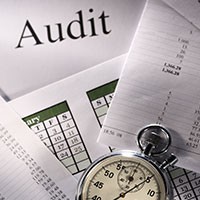Last updated: April 12 2016
Start-Ups: Seven Tips To Audit-Proof Your Tax Return

When did your business go from being a sideline or hobby to a viable going concern? It’s important to be able to pinpoint the date if you want to stay out of CRA’s cross-hairs.
The key is: when was there a reasonable expectation of profit or earning income from the business? Here are seven tips to help you stay on the right side of the taxman:
- Establish your fiscal year end. This is normally December 31 for most unincorporated small business organizations; however, speak to your Tax Services Specialist if you feel there is a bona fide business reason to choose a non-calendar year end.
- Write a formal business start-up plan, including a marketing plan, a cash flow analysis, and a formal budget, and set up the ability to run comparative reports in the future. These documents will all go a long way to winning a tax audit, because you will be able to show that your business is not a hobby. That’s important, because the losses of a legitimate business can be used to offset any income in the same year, or if in excess of income, in “carry over” years.
- Always document and separate personal-use components of any of your expenditures. Treat your business like a separate individual: open a separate business bank account and use business charge card accounts. Do not give CRA a reason to go through all your personal accounts.
- Keep a daily business journal to document your networking and contacts with suppliers and others who will help you build and grow your business. This will not only help to justify a legitimate business start-up, but will also help you keep your travel logs so you can claim some of your auto expenses. Remember, use your car’s odometer, trip computer, GPS, or use Google maps to figure out and document the distance you travel between your workplace (even if the location of the business is your home office) and any clients, suppliers, or service providers (such as the post-office, etc.) that you visit for business purposes.
- Classify deductible expenditures properly, into operational and capital items, to facilitate proper tax filing and do some long-term tax planning. These expenditures are treated differently for tax purposes, so you will need to track them separately. You will be able to write off the full costs of your operational expenses—those fully used up in running your business, like rent, supplies, wages, printing, freight, etc. However, assets—those items with a useful life of over a year—are subject to depreciation.
- Know the value of your tax losses and how to apply them against other income in the current year and in the carry-over periods. Most businesses can use their losses to offset all other income in the current tax year, other income of the previous three tax years and other income of the next 20 tax years in the future. Clearly these losses are very valuable in minimizing taxable income in the start-up years and should be preserved. This opportunity is also a reason not to incorporate right away, unless there are liability or other reasons, such as family income splitting with dividend sprinkling. Talk to your Tax Services Specialist about this.
- Review your business organization structure often, at least every six months in the start-up period. Is a proprietorship the best format, or should you be considering a partnership or corporation? Is there a better way to split income with family members or a better compensation structure for the owner-manager? Can you position yourself to operate a qualifying Small Business Corporation whose shareholders qualify for the capital gains exemption and the low small-business tax rates?
 |
These are very important conversations to have with your Business Services Specialist, not just to meet tax filing requirements, but also to better understand whether your business should be incorporated and when the optimal time for this should be.
Evelyn Jacks is President of Knowledge Bureau, Canada’s leading educator in the tax and financial services and author of 52 books on family tax preparation and planning.
NEXT TIME: HOW TO CLAIM BUSINESS EXPENSES PROPERLY





